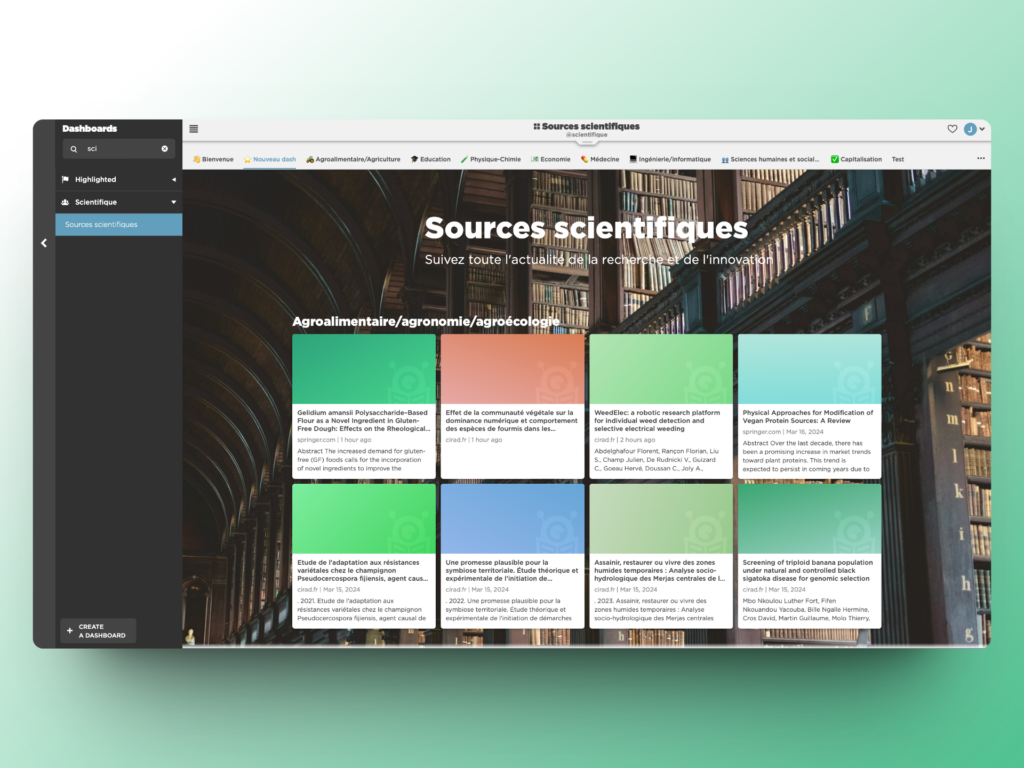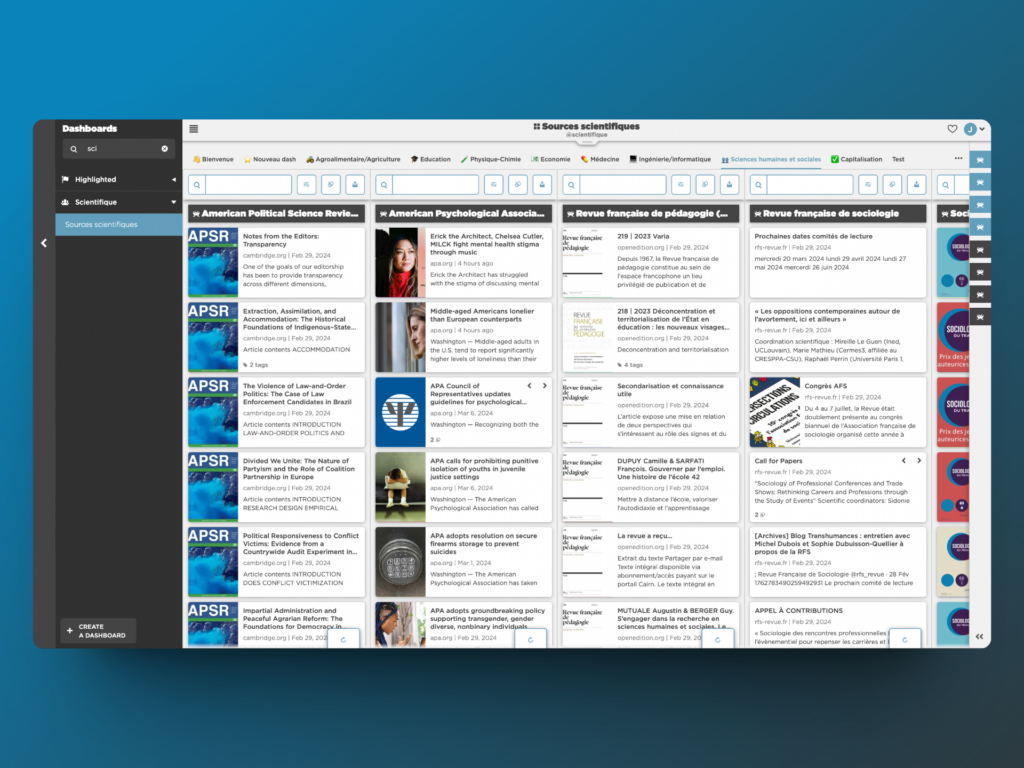Scientific and technological intelligence: where to start?
Scientific and technological intelligence are strategic tools and methods, essential to support research and innovation orientations.
They support the acquisition of the necessary knowledge of the evolving scientific and technological landscape. This enables decision-making to be informed by critical insights on emerging trends, technological developments and competitive positioning.

Implementing such an approach requires using appropriate methods and practices.
Define your scientific and technological monitoring topic
Before starting your monitoring on your market intelligence platform, think carefully about your topic and ask yourself the right questions: what are the questions I need to answer? In what format? When or how often? What are my areas of research? Who are the internal experts I need to contact to better understand and define the subject? Which themes will enable me to segment my monitoring (social sciences, medicine, economics, etc.)?
Do I want to monitor specific sources/reviews on my topic? Or implement a broader monitoring based on the detection of a set of keywords on a scientific database that hosts dozens of other scientific sources on my subject? Do I need to set up a patent monitoring? Is competitive intelligence already conducted within the company? Do we capitalize on the trade show monitoring we are doing? And on the contacts we meet?
These are just some of the questions whose answers will help you define your monitoring topic.
Identify the sources of your monitoring
Once you have established your topic and your lines of research, identify your reference sources of information on the subject. For a scientific monitoring, it is important to follow the publication of original works, studies and other figures, as these are primary sources. You can also identify the LinkedIn accounts or publication spaces of experts associated with your watch.
Press sources are secondary sources that can be interesting to follow, as they can make the work of some scientists more accessible. Nevertheless, for editorial reasons, the press will cover only a part of all the published work.
If you want to gather first-hand information, it’s best to go directly to scientific sources. These are a collection of publications showing information and research results in the form of articles, reviews or reports in a specific field of science. They are often created by researchers or experts, and undergo an evaluation process to guarantee their quality and reliability.
There are a multitude of scientific sources. Some are specialized and have their own website (e.g. : The Lancet), while others are hosted on specialized platforms (eg: Journal of the American Medical Association in medicine) or generalist platforms (e.g: Base Search). Some of the publications require a fee and are protected by subscription.
For further information, a guide lists many of the scientific sources to watch out for:
Integrate your sources into your market intelligence tool
You’ve now identified the scientific sources you need and found the platforms on which they are hosted. For some of them, it is possible to find RSS feeds provided by the sites to follow the entire magazine, or to pull a feed from an advanced keyword search.
With Curebot, for example, you can create a watch with several bots on the themes of your choice. If, for example, you want to create a monitoring on the theme of health and follow the latest news from the main journals, you can create a bot for each journal. (The Lancet, New England Journal of Medicine, National Institute for Health and Care Research, Health Evidence etc.). In some sources, you can indicate your search directly on the site: either in the targeted feeds available, or directly through an advanced search. Some sources allow you to create an RSS feed on an advanced search. With Curebot, you can manually create a feed using the search url.
In each bot, you can indicate the filters of your choice, either simply or using Boolean operators to specify your search.
Organize, capitalize and collaborate on your scientific intelligence approach
In a dashboard, you can display your raw information feeds, as well as any information you wish to save. The advantage is that you can centralize your information in a common space, which you can edit according to your preferences: with a column display or a block system.
Your dashboard is a collaborative workspace offering access to a common resource consultation area to the entire team working on the subject (and all employees).


Distribute and share the fruits of your scientific intelligence
Newsletters can be useful to share the resources you have analyzed, both internally and externally. You can create sections to segment it by theme (social science, medical or education news), by newspaper/magazine or by a specific subject (biotechnology, cardiology, etc.).
Conduct analysis, customize all colors and banners, share your newsletter with recipients by e-mail or on other distribution channels (LinkedIn, internet/intranet site) and benefit from consultation statistics.
To find out more: a sample newsletter is available
Communicate your scientific intelligence and animate the community of contributors
Setting up your monitoring tool is only the first step! Now is the time to make your approach and deliverables known, and to acknowledge and thank your contributors. We’ve shared some valuable tips with you here and here.
Ready to optimize your scientific research with a specialized monitoring? Ready to explore new paths?
Follow us on LinkedIn
